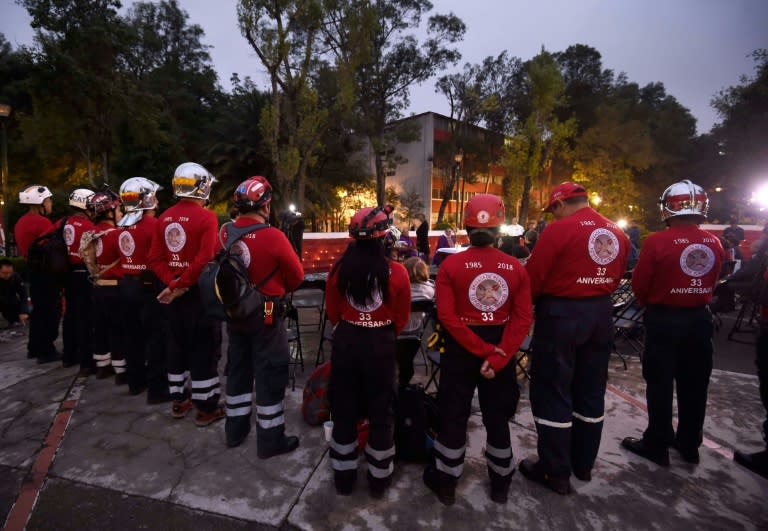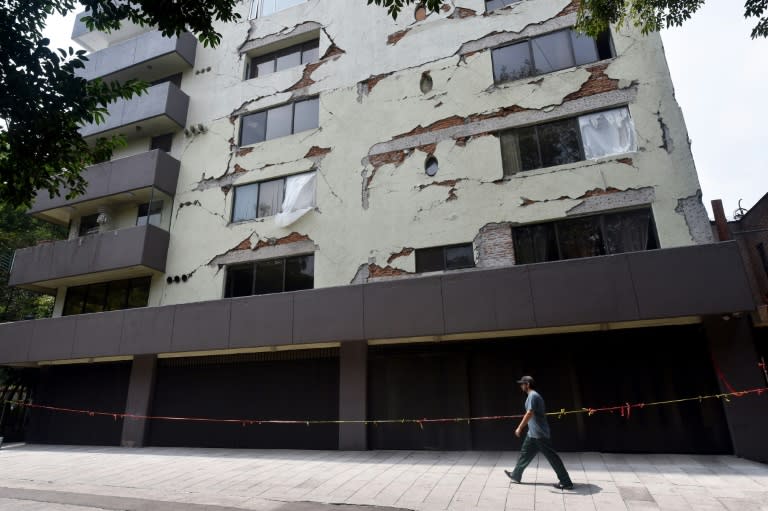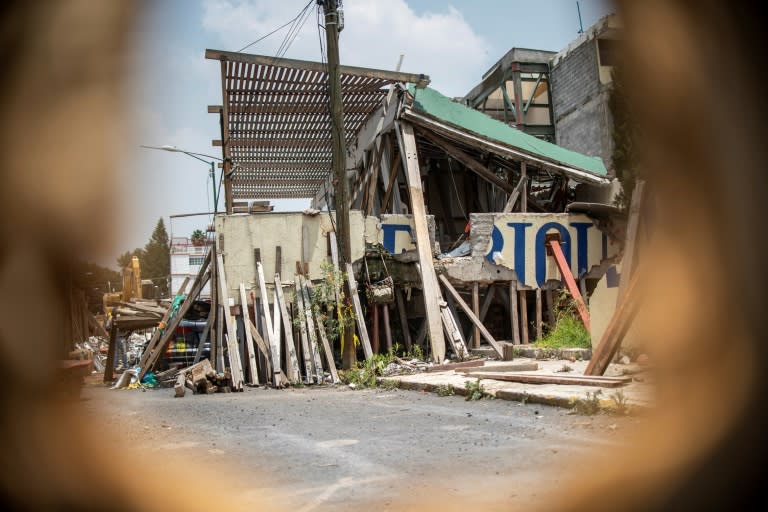Mexico marks anniversaries of two deadly quakes
Mexico held memorials and protests Wednesday in memory of the two earthquakes that devastated the country on September 19 -- one that killed 369 people last year, and another in 1985 that killed more than 10,000. Raising their fists in the air -- the symbol used by rescue workers to call for quiet as they search for signs of life in the rubble -- Mexico City residents held a minute of silence for the victims of both quakes. Then, as it does every year, the sprawling capital of 20 million people held an earthquake drill, preparing for the inevitable next quake in one of the most seismically active regions on Earth. As the city's deafening earthquake alarms droned out their chilling message -- "seismic alert, seismic alert" -- some residents broke down in tears. "The trauma is still there, even though time has passed, even though we know this isn't real," said Ofelia Gomez, 39, a bank teller. - 'That enormous building danced' - The 1985 earthquake, which measured 8.1 in magnitude, left huge swathes of Mexico City in ruins. In an early morning ceremony, locals paid tribute to victims of one of the worst collapses, the 15-story Nuevo Leon apartment building, where 472 people died. Former resident Fernando Lopez Padilla, 67, recounted the moment of the quake. "At 7:19 am, that enormous building started to dance, to break into pieces," he told AFP. "In a matter of seconds, the whole thing collapsed." The government was so overwhelmed by the disaster 33 years ago that residents had little choice but to take matters into their own hands. Thousands of civilian volunteers flooded the streets and tunneled through the rubble of collapsed buildings, frantically searching for survivors. Many Mexicans say the quake changed the country forever. Political analysts often say the ensuing outrage drove Mexico's transition from a one-party state to a nascent democracy over the next 15 years. - A drill turns real - The many changes wrought by the 1985 quake included the installation of Mexico City's alarm system. Using seismic monitors, it aims to give residents up to a minute's warning before a quake strikes. Every year since it was installed in 2015, the city has held a massive drill on September 19. One year ago, the capital had just completed the annual rite when, some two hours later, the ground started trembling for real. Ironically, because the epicenter of the 7.1-magnitude quake was just 120 kilometers (75 miles) away -- and not on the Pacific coast, where the seismic monitors are concentrated -- the alarms did not sound until the city was already shaking violently. Scenes reminiscent of 1985 unfolded across the capital: dozens of buildings collapsed into tangled mountains of concrete and steel, which were soon swarming with frantic volunteers racing to reach those trapped inside. - Lingering scars - Mexico City, a vibrant and cosmopolitan capital, has largely bounced back in the past year. But look closely, and the scars are still visible. At the Tlalpan housing project on the south side of the city, some 100 people still live in an improvised camp beside what used to be building 1C -- left homeless by its collapse, which killed nine people. Former residents protested there Wednesday, accusing the authorities of turning a blind eye to their plight and breaking their promises to help them. Nearby, at the Rebsamen elementary school, where 19 children and seven adults were killed, families held an emotional religious ceremony. "A school should be a child's second home, not her grave," said Alejandro Jurado, whose seven-year-old daughter Paola died in the collapse. He is part of a group of parents who have pressed charges against local authorities, after experts determined the private school collapsed because of illegal construction practices. The irregularities included allowing the owner to build herself a penthouse apartment above the school. It is one of dozens of buildings that experts say collapsed because of corruption by owners, construction companies and the authorities meant to regulate them -- despite rigorous changes to the building code adopted since 1985.





